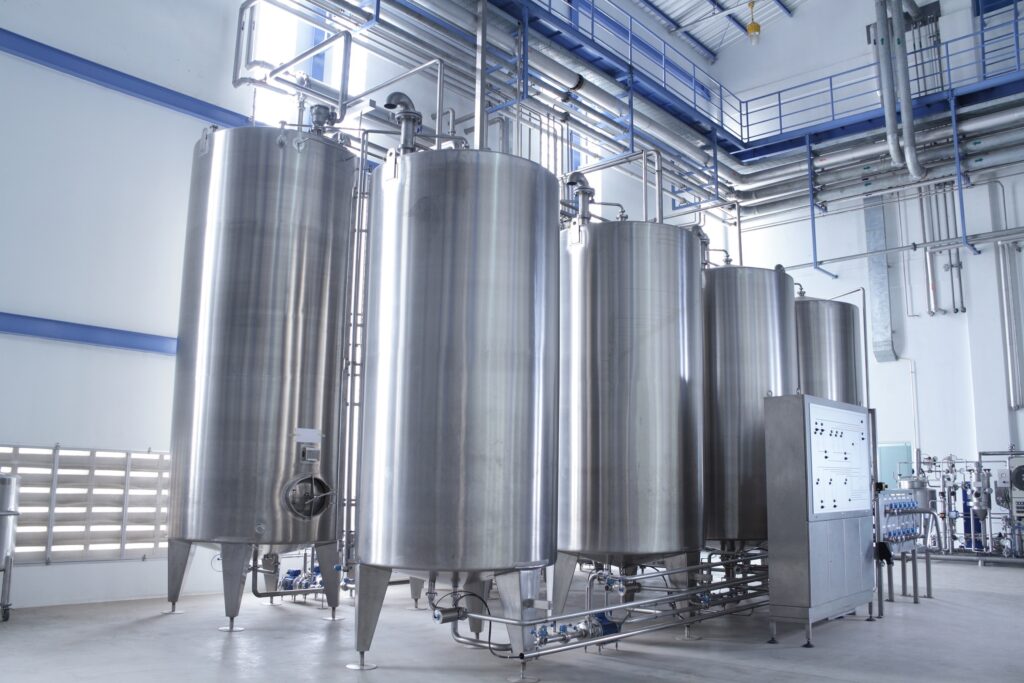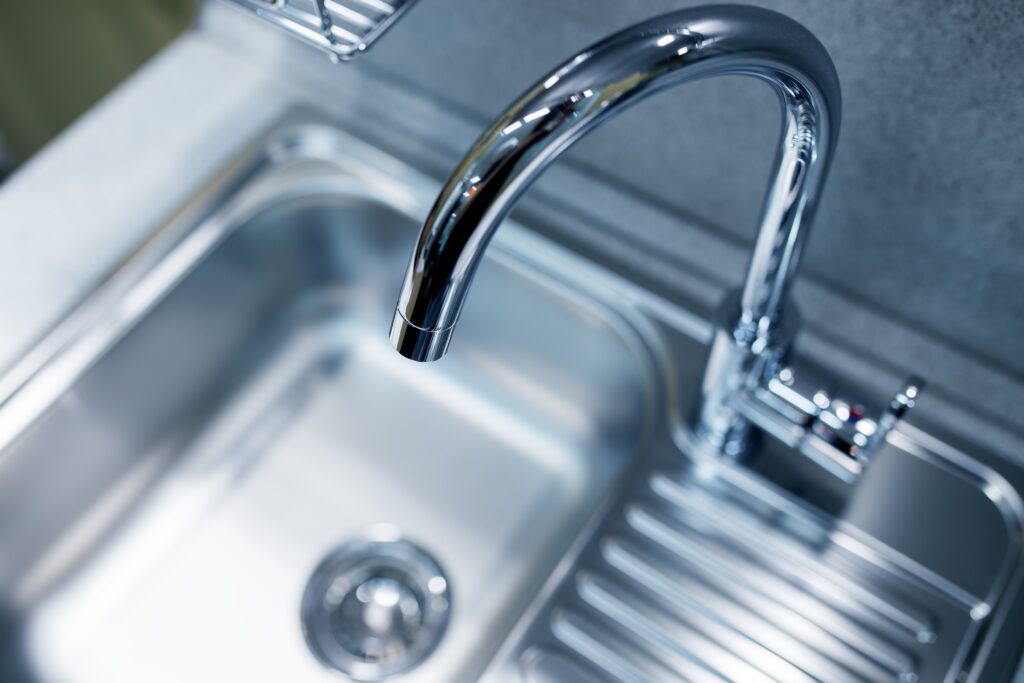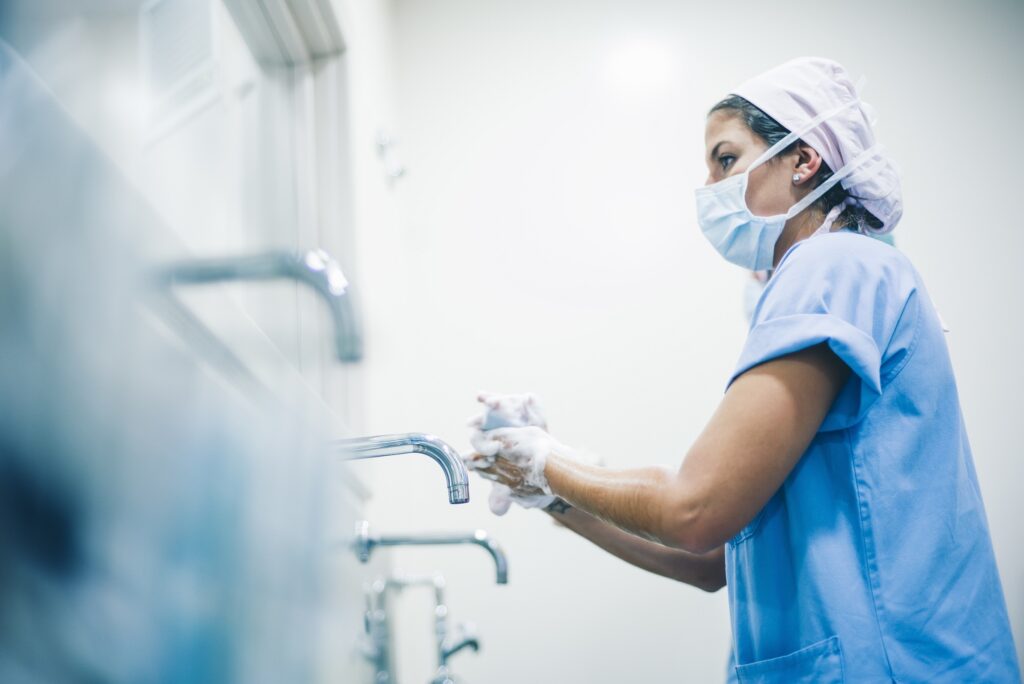- Perspective – June 2024
- Columbus Stainless Advert
- Fastenright : Advert
- Market Intelligence
- Industry Awards
- The Sassda Columbus Stainless Awards : Advert
- Professional Profile : Heinrich Vollgraaff
- Technical Insight – Stainless Steel the healthiest choice for clean machines
- State of the Stainless Steel Nation
- Navigating Challenges in Stainless Steel: EMV Africa’s Strategic Response
- The Zephyr Pioneer – Take a train ride back to the future
- Good neighbours! Investment Opportunities in Zimbabwe, Eswatini & Mozambique
- NDE Advert
- Columbus Stainless Grinding Solution Wins Top Industry Award
- Forging the future: Sassda Shines at Machine Tools Africa Expo
- SASSDA/SAIW Annual Regional Golf Days 2024: A Swinging Success
Basic guidelines for fabricating stainless steel equipment for hygienic industries

Stainless steel fabrication is a crucial industrial process that has a significant impact on various industries. It involves the transformation of stainless steel into various products and components used in construction, manufacturing, and infrastructure development.
In this article, we will explore the importance of stainless steel fabrication and its relevance in today’s world. Stainless steel’s versatility makes it a preferred choice across various industries as its unique combination of properties, such as corrosion resistance, durability, and aesthetic appeal, allows it to excel in numerous applications. Unlike other materials, stainless steel is well-suited for both structural and aesthetic purposes, making it a versatile choice for a wide range of projects.
 The hygienic properties of stainless steel make it a cornerstone in both the food and pharmaceutical sectors, and it is the material of choice for equipment such as tanks, piping, and storage units due to its resistance to contamination and ease of cleaning. In pharmaceutical manufacturing, stainless steel is crucial for maintaining the integrity of products by preventing contamination. Similarly, in food processing plants, stainless steel surfaces are easy to sanitize, ensuring food safety.
The hygienic properties of stainless steel make it a cornerstone in both the food and pharmaceutical sectors, and it is the material of choice for equipment such as tanks, piping, and storage units due to its resistance to contamination and ease of cleaning. In pharmaceutical manufacturing, stainless steel is crucial for maintaining the integrity of products by preventing contamination. Similarly, in food processing plants, stainless steel surfaces are easy to sanitize, ensuring food safety.
In this article, a few important fabrication guidelines and practices are listed that can assist fabricators. However, the true requirement for the fabrication of world-class products is much more involved as there is no local standard or official guideline or code that exists in the South African stainless steel sector. Sassda has therefore started the process of compiling such a code but has used the information contained in the Australian Food Code of Practice as a framework for this article.
Start with a strong foundation and a paper trail
It is the fabricator’s expertise that ensures that the stainless steel used in these industries meets stringent requirements. As such, a successful stainless steel fabrication of food, beverage, and pharmaceutical equipment will have the following crucial elements in place when starting
a project:
- Supplier accreditation systems to ensure the integrity of the process from concept to the final commissioned equipment and even beyond. This entails an efficient means of ensuring that materials, products, and services from suppliers meet the required standards. There should be traceability of supplier accreditation with a good track record inthe industry.
- Quality systems to ensure traceable adherence to customer specifications and regulatory requirements of the industry. While an internationally accredited system such as ISO 9001 is preferred to demonstrate commitement and an ability to continuously produce
quality products, it is not always a stringent requirement in the South African industry. Fabricators that can illustrate a working quality management system, built on the principles of the ISO 9001 standard, and a willingness to comply with the quality system of the customer, would not be excluded from work in the industries requiring hygienic processes and equipment in the South African context. - Compliance with the applicable health, safety, and environmental laws and regulations remains important. The fabricator should have the knowledge and a good understanding of the relevant standards and legal requirements of the industry they intend to work with. The fabricator should be confident enough to be subjected to third-party quality inspections.
- A thorough paper trail. Documentation that demonstrates experience, technical capacity and capability, staff training records, standards and codes used by the fabricator, as well as referrals from past customers, shows a sound and traceable industry track record. This can be instrumental in securing good work.
Design to succeed

Solid fabrication starts in the design phase, and a superior design will consider customer needs, the design requirements for hygienic applications according to the relevant standards, and the practical implications of this within the final manufacturing design and production processes. Some of these general design considerations will speak to material grade selection and surface finishes. For instance:
General requirements:
- The design shall avoid creating areas where pooling and subsequent evaporation can lead to a concentration of contaminant residues.
- Consideration should be given to possible galvanic corrosion effects from contact between dissimilar metals.
- Suitable allowances shall be made for thermal expansion and contraction between various grades of stainless steel and other materials.
- Stairways, handrails, platforms, and walkways shall be designed, fabricated, and installed by the applicable South African regulations.
- Insulation required for vessels or pipes operating at nonambient temperatures shall be chloride-free and protected by outer cladding.
Product contact surfaces:
- All interior surfaces of plant and equipment shall be self-draining to avoid the creation of pockets of product technical insight
during operation or cleaning. At least a three-degree slopeis required. - A dead leg length shall be no longer than 1.5 times the pipe diameter.
- Corners shall be radiused to facilitate drainage.
- Design features that create a crevice, open to the product, or a hollow body adjacent to the product, shall be avoided. In addition, threads must not contact the product.
- The design of the plant or equipment shall ensure that all surfaces in contact with the product are readily accessible for inspection, cleaning, and maintenance.
- CIP equipment must be designed to ensure that all surfaces can be adequately cleaned.
- All lids or access covers should be designed so that when opened; contaminants on the exterior of the equipment or lids/covers are prevented from entering the plant or equipment.
Non-product surfaces:
- Crevices and residue collection points shall be avoided.
- The design shall ensure that all non-product contact surfaces can be readily cleaned.
- All non-product contact surfaces and supporting structures should be designed to shed water.
- Horizontal surfaces are undesirable.
- To control the “stickability” of organic materials, surface roughness parameters such as Raz or Ramax may be specified.
- Equipment not flush to a wall shall be set at least 0.6m away from any wall.
- Tanks, vessels, or equipment not mounted flush to the floor or plinth shall have a minimum of 300mm clearance between the base of the item and the floor to allow the floor beneath and the underside of the equipment for cleaning and inspection.
Other requirements:
- The design should avoid creating areas where pooling and subsequent evaporative drying of moisture can occur, leading to a concentration of undesirable residues.
- Due consideration should be given to possible galvanic corrosion effects arising from contact between dissimilar metals and alloys or metals and conductive non-metals such as graphite seals.
- Suitable allowances should be made for thermal expansion and contraction between various grades of stainless steels and other materials, for example, in stiffeners supporting plant or equipment.
- Stairways, handrails, platforms, and walkways shall be designed, fabricated, and installed by the current national standards and regulations.
- Insulation required for vessels or pipes operating at non-ambient temperatures shall be chloride-free.
- Insulation must be protected from water and physical damage by outer cladding.
Sensible material grade selection
Processes play a major part, along with the intended product, in determining grade selection. The following guidelines can be of assistance:
- Generally, hygienic process plants will be constructed from grades 304/304L or 316/316L stainless steel.
- Carbon content, by default, shall be 0.08% or lower for materials less than 3mm and less or equal to 0.03% for materials that exceed 3mm. This is to avoid sensitization and consequent risk of intergranular corrosion in welded components.
- Grade 304 stainless steel is suitable for continuous contact with chlorides up to 200ppm at ambient temperature.
- Grade 316 stainless steel is used for heavier corrosive conditions up to 1000ppm chloride contact at ambient temperature.
- For hot water systems, a material such as the Duplex Grade 2205 should be considered for temperatures over 55ºC.
- Slicers, cutters, and blades are usually made from martensitic stainless steel, which is hardened by heat treatment in the same manner as carbon steel.
- If equipment is intended for cryogenic service, it will require the use of austenitic stainless steels such as 304/304L or 316/316L.
Take care of the material
Stainless steel material is valuable and comes at a higher cost than standard carbon steel. Proper care of the material remains important in storage and the fabrication area. Consider the following:
- The fabrication methods and techniques should not cause any damage that would lead to reducing the designed service life.
- Stainless steel products should be stored separately from mild steel and from other materials that can result in contamination.
- Contamination of stainless steel products by carbon or carbonaceous materials is to be avoided, especially if the material is to be welded. This includes oil, grease, crayons, marking pens, and paint.
- Do not walk on unprotected stainless steel products.
- Stainless steel products awaiting fabrication should be stored inside. If stored outside, they must be protected from the weather.
- All stainless steel tube and tube fittings shall be protected from damage, contamination, and marking (scratching) during storage.
- Tube and pipe should be handled carefully to prevent distortion.
- Handle, and store, flat and tubular materials in boxes or strapped bundles and in well-supported racks where possible.
- Maintain identification markings. Requirements for batch traceability should be specified by the purchaser.
- All tubes and fittings should be stored with the protective plastic wrap provided for shipping and delivered intact, and preferably in their timber shipping container.
- Tube end caps or plastic bag protection should always kept in place to avoid any internal damage or contamination.
- If carbon steel or galvanized straps are used, they must be prevented from touching the stainless steel.
Make sure of weld integrity
Welding is regarded as a special process. As such, each weld will have specific parameters and technical requirements. The following list points out some important points:
- Carbon steel should not be welded directly to stainless steel if it is going to be exposed to wet or humid conditions.
- When joining carbon steel to stainless steel, an intermediate stainless steel doubler plate shall be used that shall not exceed the parent material’s thickness.
- Welds should be located away from highly stressed or cold worked areas such as bends and knuckles.
- Welds should not cross, as the residual longitudinal stress in the welds will cause a highly stressed region.
- Fillet weld attachments shall not be welded over butt welds.
- Lap joints and intermittent fillet welds shall be avoided because of crevice and contamination issues.
- Heat tint not only reduces corrosion resistance but also degrades cleanability and may increase microbial activity. It should be removed by either mechanical or chemical means, and the surface roughness in these areas should be restored as closely as possible to the original condition.
Consumables:
- All welding consumables must be handled by the manufacturer’s instructions and maintained clean and dry.
- Protect MIG wire spools - these are easily broken, making the wire unusable.
- Maintain packages in unbroken condition as long as possible.
- Flux-coated electrodes require careful storage - refer to the instructions from the manufacturer.
Finishing welds by restoring the surfaces
- Where welds are accessible and are not required to be ground flush, they shall be manually wire brushed, while still warm after welding to remove thick slag and flux residues, followed by pickling. This can be followed up with finer abrasives.
- Pickling chemicals shall not be left in contact with the material for a period exceeding that recommended by the manufacturer. All residues shall be completely removed using fresh, clean water.
- Alternatively, where required, welds on the product contact side shall be ground flush and polished to the appropriate Ra. The surface is abraded using successively finer grit to the required roughness. The abraded strip along a weld must be wide enough to remove any heat-degraded surface oxides. A final passivation process is required to remove internal and external contaminants.
- Note that weld roots and interior heat-affected zones of welds that cannot be ground and polished shall be protected from oxidation by back purging during welding.
- This is critical as heavy heat tint caused by poor purging is extremely difficult to remove by chemical pickling alone.
- Reduction of parent material thickness during grinding and polishing shall not exceed the greater of 0.25mm or 5% of material thickness.
- During grinding and polishing, localized heat build-up or “blueing” of the material shall be avoided.
- Iron-free particles shall be used for all shot or abrasive blasting processes. If abrasive blasting is used to remove heat tint, the surface roughness is normally increased, and care is required to ensure the Ra requirements are satisfied. Note that the metal flow caused by the impact of the abrasives may trap blasting debris and form crevices which promote corrosion and limit cleanability.

As mentioned, the guidelines and practices stated in this article are just the tip of the proverbial iceberg when starting to look at the full requirement for the fabrication of hygienic process equipment.
This article is therefore aimed at raising awareness amongst fabricators on the issues to truly deliver on the expectations of the hygienic industry. Sassda is working on a South African code of fabrication best practices for the hygienic industry, which will assist members to be worldclass and globally competitive in the future.
For more information on the development of these codes e-mail michel@sassda.co.za

